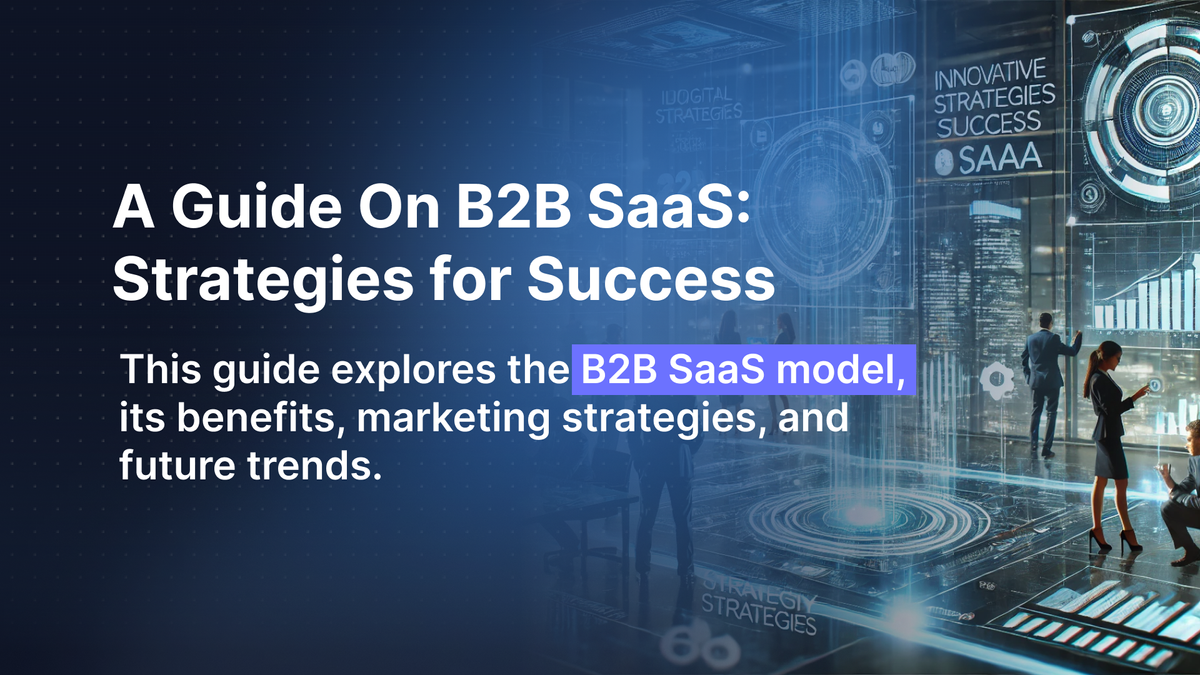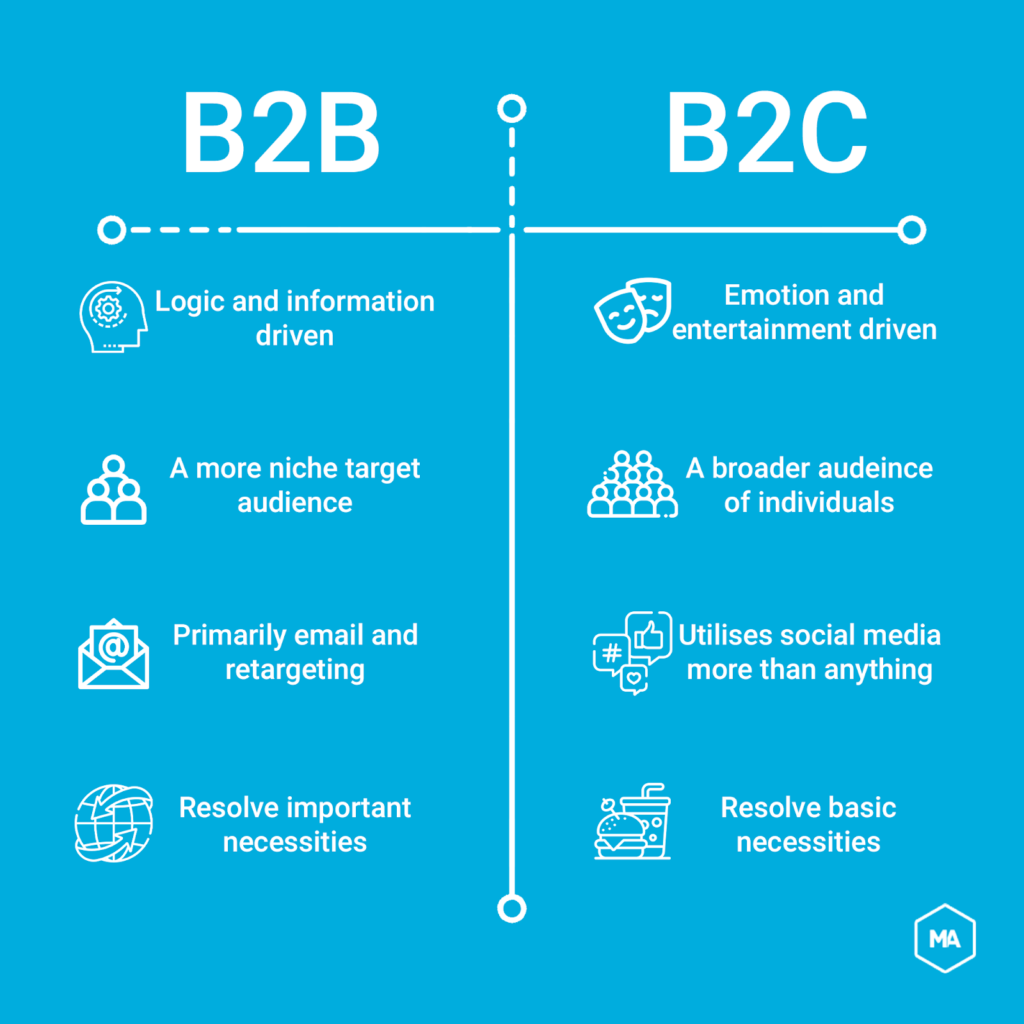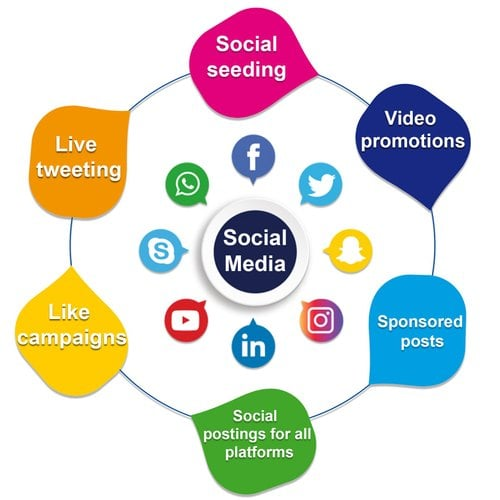This guide explores the B2B SaaS model, its benefits, marketing strategies, a...

It was in 1990 when Salesforce launched customer relationship management (CRM) as its first SaaS solution in the digital market. Now, over 96% of the companies have at least one SaaS product, increasing the market size to an estimated $900 billion by 2030.
The concept behind B2B SaaS models is to provide cost-effective software solutions to businesses and enterprises specifically tailored to their needs. This revolutionizes the way organizations and teams interact with technological products.
However, the B2B market has various challenges, such as data security and managing customer expectations. This guide will help you understand how the SaaS business works and how to start a B2B software model.
To launch your first SaaS product, you need to know what B2B SaaS is. B2B stands for Business-to-business, and SaaS refers to Software-as-a-service. Simply put, it’s a business-to-business Software-as-a-Service model run and managed on the Cloud.
Compared to traditional software programs or servers, these SaaS products are highly accessible, meaning you can directly use them on a browser. This also eliminates the need to install high-storage software, as you can access it online at a set price. Here are some key points that will further help you answer the query of what is B2B SaaS:
Besides, B2B models serve a broad audience range, mainly targeting entrepreneurs and large-scale organizations. Its purpose is to help businesses access the much-needed technological products without installing third-party apps or large softwares. Overall, it’s cost-effective, scalable, and only requires a stable internet connection.
When using the term B2B SaaS, people often confuse it with B2C. Although both belong to the same software-as-a-service category, they differ in various aspects. B2C stands for business-to-customer, meaning it deals directly with users to solve their personal needs. On the other hand, B2B solves business needs and is used by organizations or teams. Let’s have a detailed look at the difference between B2B and B2C SaaS:
The target audience is the first and most important factor differentiating between B2B and B2C SaaS models. B2B is designed for large-scale businesses and organizations. It involves teams, enterprises, and corporations. On the other hand, B2C SaaS is for individual users. It involves consumer-focused apps or softwares that solve personal needs.
Another key factor differentiating between B2B and B2C models is pricing. B2C often works on tiered pricing models such as monthly or yearly subscriptions. It is based on features, usage, and number of users. The most common methods include enterprise pricing and weekly or annual contracts.
On the other hand, B2C employs simpler and generally cheaper pricing models. These often include freemium models or monthly subscriptions. The best thing is they are customer-focused, which means a user can cancel the subscription anytime without worrying about long-term contracts.
B2B or business-to-business software models offer exceptional customer support through account managers and customer service teams. They provide extensive training and resources to assist businesses with all the information they need about a specific product. B2B models, especially Customer Relationship Management platforms, offer an impeccable customer experience.
On the contrary, B2C SaaS models offer limited customer support options. This usually includes FAQs, knowledge bases, and community forums to help users with software usage. For further assistance, you can get help from self-help articles and video tutorials.
Another vital factor that distinguishes B2B SaaS models from B2C is customization. B2B offers high customization and integration options to meet specific business needs. On the other hand, business-to-consumer (B2C) has limited customization options as it is tailored to the consumer base.
A great example of a B2B model is the project management software called ClickUp. It is designed for teams and businesses so they can work, plan, and collaborate on different tasks and product designs.
Similarly, Notion is an ideal example of a B2C SaaS model designed for individuals or personal use. It is a productivity software that allows users to manage projects, write their ideas, or make a to-do list for everyday tasks.

Compared to traditional softwares, the B2B SaaS business model offers high accessibility and greater flexibility to businesses. It provides a list of advantages and is rapidly growing among enterprises and organizations. From flexible business models to data-driven decision-making, let’s discuss its key benefits one by one below:
One of the primary advantages of B2B SaaS models is they help save money. Unlike traditional software models, business-to-business softwares typically works on subscription-type pricing methods.
This saves users from the upfront costs of buying expensive hardware and software licenses. You can access everything on your mobile or desktop browser. Due to its cost-effectiveness, small businesses and startups can stop worrying about maintenance issues and focus more on strategic growth tasks.
B2B companies understand that businesses change or expand over time to meet the increasing demands of customers. For this reason, SaaS-based B2B platforms are made highly scalable so that companies can easily adapt to changing market trends without paying additional costs. The scalability can be of different kinds, such as:
Whatever your scaling method, B2B platforms make it easy to expand your business model without compromising on quality or software functionality. This way, you can confidently enhance your customer base without worrying about additional infrastructure charges.
B2B SaaS business models are known for high accessibility and greater flexibility. Users can access them from anywhere globally and remotely collaborate with their team members. All they need is a stable internet connection; every feature will be accessible regardless of location. The best thing is this softwares works perfectly on multiple devices, including desktops, laptops, tablets, and smartphones.
One of the key benefits of B2B SaaS platforms is that they continuously improve their software and introduce new features frequently. This allows businesses to get high-performance, secure, and up-to-date tools for teamwork and collaboration.
Moreover, it eliminates needing to install new software versions or manually wait for long updates. Everything is done via automatic updates, so you don’t have to waste hours on manual maintenance and upgrades.
As B2B SaaS companies are growing by leaps and bounds, their main priority is to keep your data secure and protected from cyber-attacks. They use advanced security measures such as multi-factor authentication and end-to-end encryption to keep all your information in the cloud.
Additionally, SaaS providers follow strict regulatory compliances to ensure your important information cannot be lost or hacked by third-party apps. They often adhere to industry regulations and have robust security protocols to minimize the risk of data breaches.
Do you know why most B2B SaaS companies fail in their first attempt? The obvious reason is they don’t focus on practical marketing steps and just go with the flow. Such companies experience failure or low profitability because they skip the much-needed marketing step.
If you look at the statistics, you’ll see that successful B2B platforms spend almost 30-40% of their annual budget on marketing. To build your presence in this oversaturated marketplace, you need to learn effective marketing strategies. Below are some key marketing tips that can do wonders for your business. Let’s get into them one by one:
The best way to market your B2B model is by creating content that identifies the pain points of your target audience. That’s where content marketing comes in. It is one of the most powerful tools to retain customers by providing valuable information about your product or software. Here are some key things included in content marketing:
These are just some of the top content marketing methods. Experts state that marketing through content creation works as an effective strategy as it helps create a strong online presence at a comparatively low cost. So why not take the deal and get limitless marketing benefits?
Gone are the days when you had to promote your products using posters or physical boards. Thanks to the limitless social media platforms that allow B2B SaaS providers to market their products with a few clicks. Social media marketing, or SMM, has helped billions of businesses in building a loyal customer base.
The best thing is you can market your business model on various social sites. This includes the most popular Facebook, LinkedIn, Instagram, Twitter, and, of course, the largest video-sharing site, YouTube. All these channels will help you share valuable content, engage with followers, and reach targeted customers on a large scale.

To market your B2B products, you need to learn SaaS experience meaning and the right marketing tactics. The ultimate goal is to attract a wide audience using different means to promote your software globally. A practical approach is to use visual marketing strategies.
People are more attracted to a product if presented visually, as a picture is worth a thousand words. For this, you can host webinars or record product demos that solve customer problems and better highlight your software features. This will help you generate leads and increase brand visibility quickly.
Another powerful B2B marketing strategy is to target customers using paid advertising. This is commonly called pay-per-click or PPC advertising. It is an effective tactic that can help you generate leads and improve your search engine rankings. You can run ads on the largest search engine, Google, and drive traffic to your business.
Businesses can also use social media sites to run targeted ad campaigns. Platforms like Facebook, LinkedIn, YouTube, and Instagram are often great places to run paid campaigns and generate qualified leads within a specific timeframe. In fact, 70% of successful marketers show that paid social ads help them promote content and boost their business on a large scale.
Here comes the most effective marketing strategy that can help you generate billions for your B2B SaaS model. Search engine optimization or search intent optimization are powerful tools that can give you the long-term customers you want. It can involve the following key factors:
The latest data shows that over 30,000 SaaS companies operate worldwide. Each tries to make a mark in the overcrowded digital space, but some have already reached their business goals. Let’s discuss the top 3 highly successful B2B SaaS companies and their business model in detail below:
Slack comes on top of the successful cloud-based B2B SaaS examples. It is a communication platform originally designed for businesses to work and collaborate with remote teams in one single place. It primarily targets businesses and large companies that want to improve their productivity.
Slack was launched publicly in February 2014 and has become the fastest-growing B2B software in the world. What makes it unique is its user-friendly interface, where teams can better organize, create, and search for information. Overall, it’s a great software solution for businesses and organizations. Let’s have a quick look at its key features below:
Another name on the list of popular B2B SaaS companies is the leading IT corporation, Microsoft. It is specifically designed for businesses and organizations to assist in their work, communication, and office tasks. With a wide customer base of over 1.2 billion, this multinational company has reshaped the digital landscape. Here are some key factors that help Microsoft stand out from the rest:
Founded in 1975, Microsoft has become more than necessary, serving billions of businesses in everyday tasks. It has developed several apps for enterprises and continuously upgrades its products to meet customer expectations.
Salesforce is another leading B2B SaaS company focused on customer service, application development, and sales. In fact, it is the company that launched its customer relationship management platform as the first SaaS solution. Currently, it targets businesses of all kinds and is the first choice for marketing and e-commerce sites.
Salesforce works on per-user subscription plans. The price can vary depending on your business type and number of users. Usually, the pricing starts from $25 per user and increases with the number of users accessing the platform.
The premium plan goes as high as $500 per user and includes special features exclusively for expensive buyers. Thus, you can adjust the cost per your business needs.
Now that you have a detailed understanding of B2B SaaS and its marketing strategies, you might be excited to know its future trends. Well, the B2B models continue to grow and will soon shape the future of the digital World.
With time, you’ll see emerging technologies in the business-to-business marketplace. Here are some significant trends you’ll experience in the B2B industry:
In the upcoming years, you’ll see companies providing vertical-specific SaaS solutions. Vertical SaaS will target industries and particular sections such as retail, financial services or manufacturing. This will lead to an increased production of industry-specific tools and platforms to provide better customization options.
With vertical SaaS, there will be more focus on regulatory compliance or industry-specific data security features. This will encourage a user-centric design and create simple and easy-to-understandable software models that specifically cater to industry needs.
As the World is rapidly moving towards artificial intelligence, the B2B SaaS platforms will also integrate machine learning tools into their products. This will allow businesses to automate routine tasks and reduce human error. To enhance customer experience and make data-driven decisions, organizations will use AI chatbots in their services. This will help them boost user experience and reduce customer churn rate by providing quick and prompt responses.
Another essential future trend in B2B SaaS companies will be the integration of an advanced database mechanism called blockchain technology. It will help in secure and transparent data management and reduce the risks of cyberattacks.
With the smart contracts feature of this technology, businesses can automate and streamline their agreements more efficiently. Overall, blockchain integration will ensure flexibility and data security in software models.
B2B SaaS is beyond just a software distribution model. It is redefining the way businesses operate by providing personalized marketing strategies and profitable pricing models. With each company investing in the B2B industry, it’s adding to the diverse customer base of this marketplace. From scalability to data security, it offers everything to its valuable users.
However, to build your presence in the B2B market, you need effort and the right technological tools. For instance, popular companies use AI support in their SaaS business model for seamless customer experience. Aidbase understands the importance of AI customer service and thus assists you in providing a customized user experience. Get in touch now to get the best AI Chatbot customer service for your B2B products.
In the highly over competitive B2B market, launching your first SaaS business becomes challenging. You can begin by identifying market needs and then understanding the pain points of your target audience. Define your unique selling point, choose the right technology, and finally launch your first SaaS product.
Adopting B2B software models might sound easy, but it’s a hard nut to crack. You’ll face multiple challenges, such as privacy concerns, limited customization options, managing customer expectations, and dealing with market saturation. To build your presence in this B2B landscape, you need to overcome these challenging factors and plan an effective business growth strategy that works wonders for you.
A B2B SaaS model is a cloud-based software solution for different subscription plans. It is easily accessed online and eliminates the need to install expensive or high-storage software models. The SaaS providers regularly update the software, ensure security protocols, and offer scalability.
As customers, you have to pay a recurring fee that can be done weekly, monthly, or annually. Some value-based models allow users to pay only for the services or specific product features. Customers can choose a pricing model that fits their needs and business type.
One of the key features of B2B companies is to ensure data security and privacy. For this, they use advanced encryption protocols and advanced security mechanisms to prevent unauthorized access.
For instance, SaaS providers adhere to industry standards and relevant certifications such as ISO 27001, SOC 2, and GDPR to demonstrate compliance with data protection regulations.